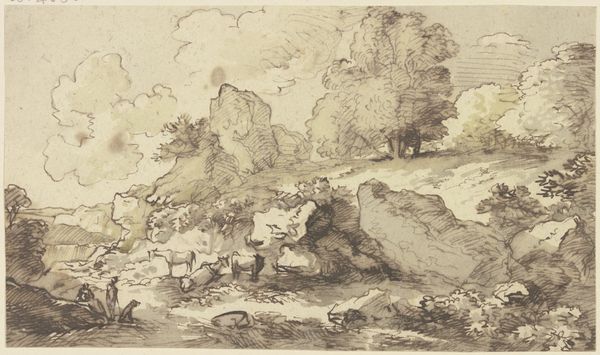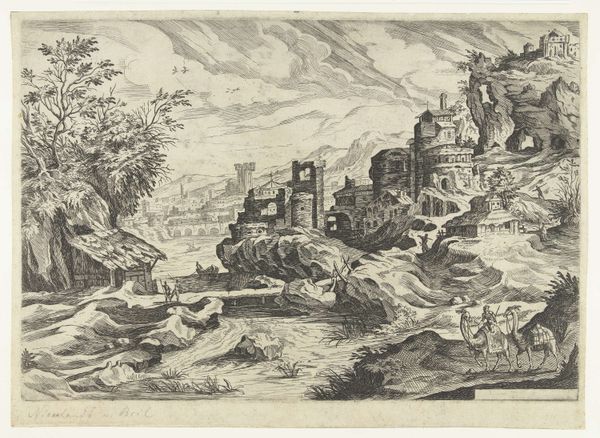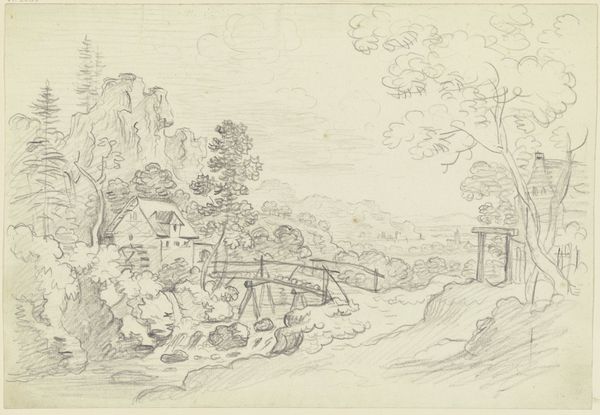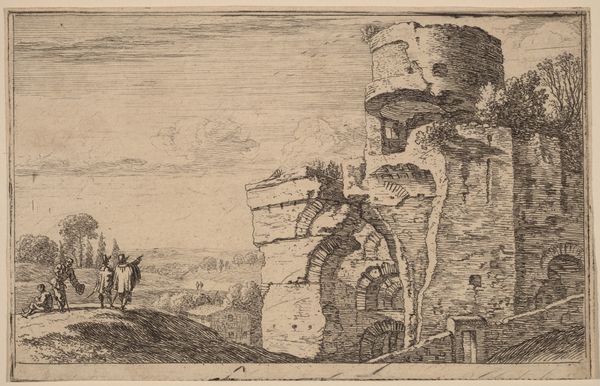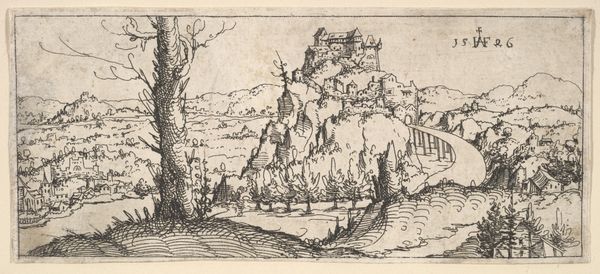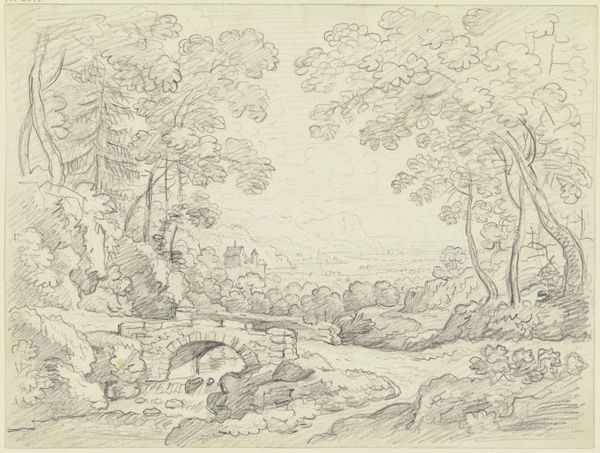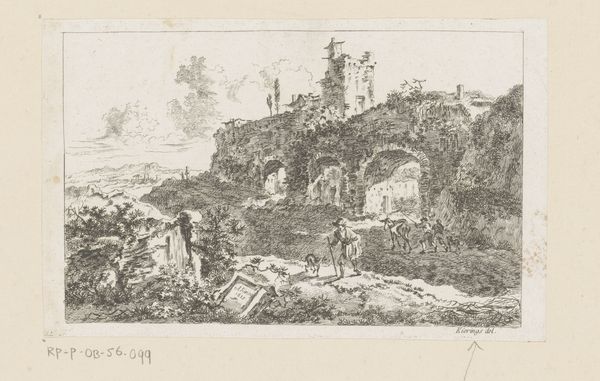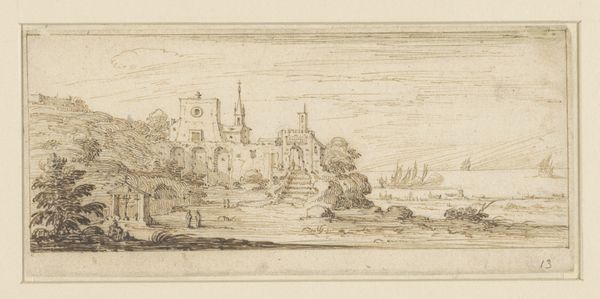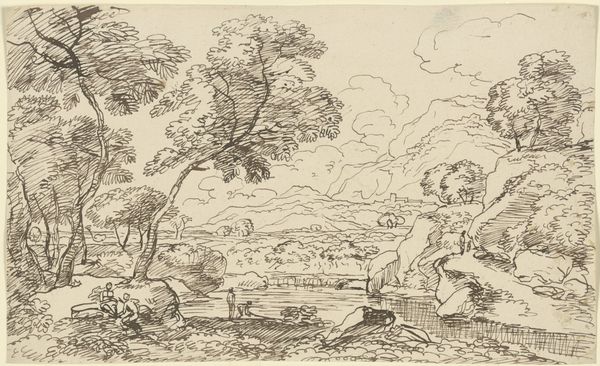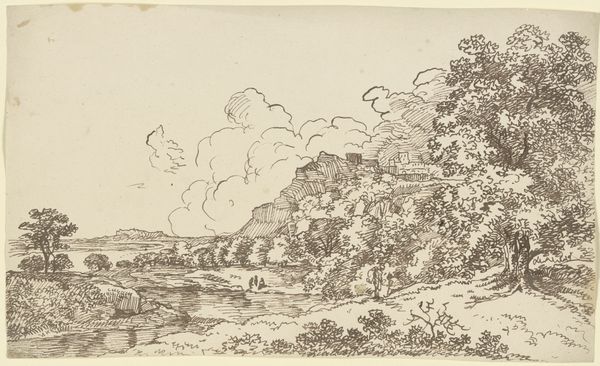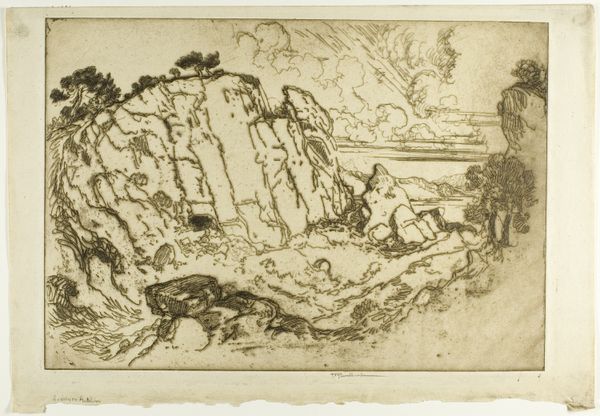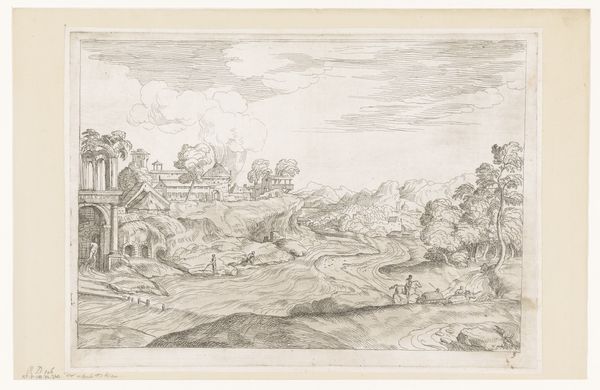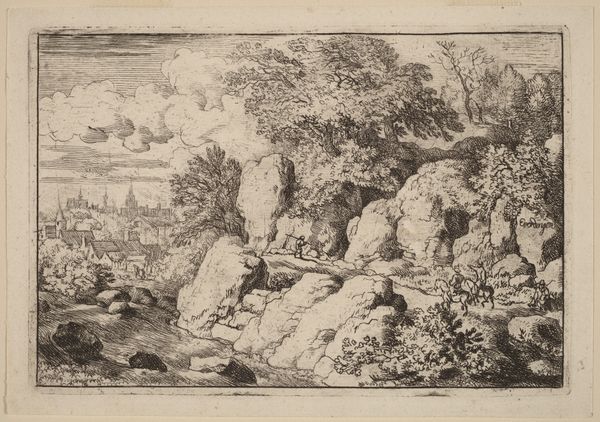
drawing, paper, ink, pen, architecture
#
drawing
#
landscape
#
paper
#
ink
#
romanticism
#
pen
#
architecture
Copyright: Public Domain
Curator: Immediately, I’m struck by how much the dense ink-work almost completely obscures the ruin depicted. Editor: Yes, Franz Kobell’s drawing, titled "Hirte und Herde bei antiken Ruinen unter Bäumen"—that’s "Shepherd and Herd near Antique Ruins under Trees"—shows us the blending of pastoral life with classical decay. Though undated, its style definitely places it within the Romanticism movement. Curator: Absolutely. Notice the technique: it is pen and ink on paper, a readily available medium for creating portable artworks, making sketches into finished drawings ready for sale or commission. I wonder about his choice of architecture as subject. The means of portraying the classical versus that which is contemporary and lived. Editor: The ruins, to me, symbolize a crumbling social order and raise questions about whose labor built this 'civilization,' while the shepherd represents a timeless and almost mythic connection to the land. Consider that this imagery emerged alongside burgeoning industrialization, and what these classical allusions say of both German nationalism and colonial expansion. The paper itself makes me wonder: was it locally sourced? Curator: Indeed, paper was becoming more widely accessible but its quality and availability were tied to trade routes and local manufacturing practices, something definitely pertinent to think about. Kobell utilizes the pen and ink to build a layering, contrasting smooth surfaces with the highly textured vegetation growing around them. How the architectural components create visual intrigue with the landscape that now embraces its ruins. Editor: I think we should push further than the surface portrayal and look at this "idyllic" scene for a representation of power structures, then and now. Who gets to graze in this space? Whose access is granted or denied? Romanticism’s obsession with ruins wasn't merely aesthetic; it was also profoundly ideological, conveniently eliding who had built the civilization. Curator: Agreed, this is more than pretty scenery. It's the outcome of using specific raw materials to achieve an artistic objective but under certain pressures from patron tastes. Editor: By discussing both the materials and what these historical echoes tell us, we engage in that deconstruction. It’s about constantly contextualizing what we see.
Comments
No comments
Be the first to comment and join the conversation on the ultimate creative platform.
